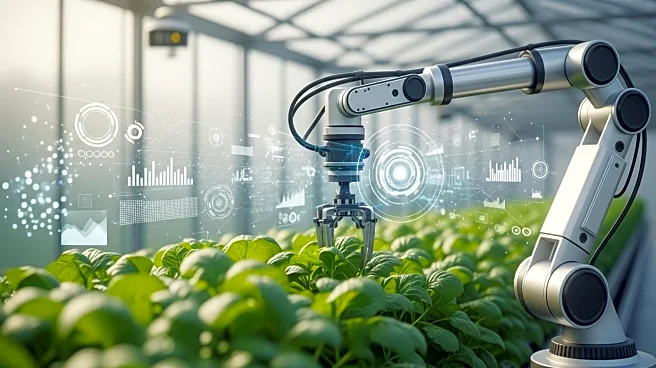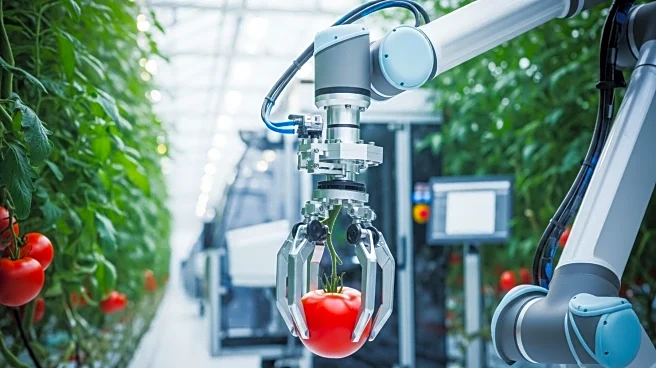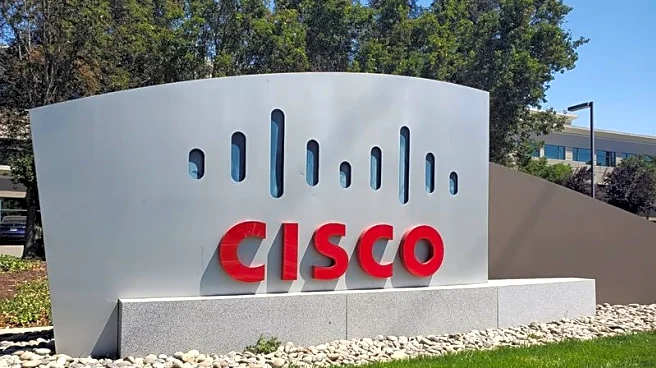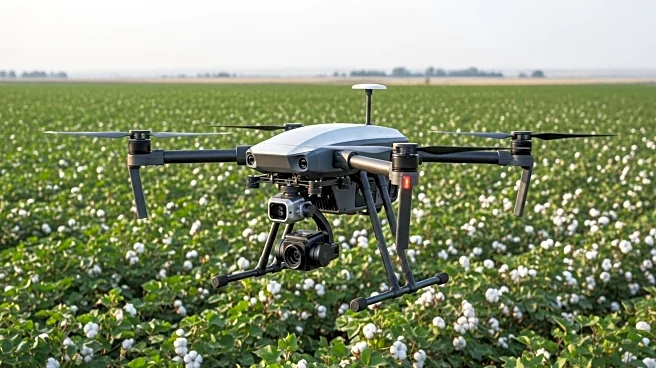What's Happening?
The AI in Agriculture market in the United States is experiencing significant growth, driven by advancements in robotics and predictive analytics. The market size reached $1.7 billion in 2023 and is projected to grow to $8.97 billion by 2031. Key players like Microsoft, IBM, and Granular Inc. are leading innovations in precision farming, crop monitoring, and automated irrigation. Recent developments include AI-powered harvesting robots and precision weeding systems, which aim to reduce labor costs and improve crop health. These technologies are transforming traditional agriculture into smart, technology-driven practices.
Why It's Important?
The integration of AI technologies in agriculture is crucial for enhancing efficiency, productivity, and sustainability. By optimizing resource utilization and reducing costs, AI-driven solutions can improve yield quality and support data-driven decision-making. This shift towards smart agriculture addresses challenges such as labor shortages and environmental sustainability, offering economic and ecological benefits. As the market expands, stakeholders in the agriculture sector must adapt to technological advancements to remain competitive and meet growing demands for sustainable practices.
What's Next?
The AI in Agriculture market is expected to continue its growth trajectory, with further innovations in robotics and analytics. Companies will likely invest in developing more advanced AI solutions to address specific agricultural needs, such as climate adaptation and resource management. Collaboration between technology providers and agricultural businesses will be key to driving adoption and maximizing the benefits of AI technologies. As the market evolves, stakeholders should focus on integrating AI into their operations to enhance productivity and sustainability.











